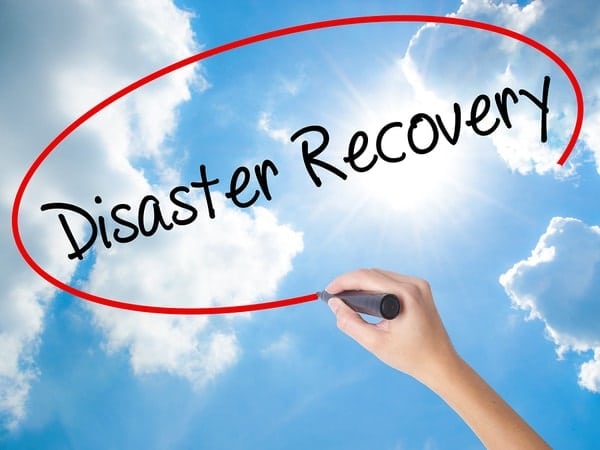Data replication in virtualized infrastructures is critical to ensuring business continuity for enterprise class customers whether in hybrid cloud or other cloud environments. With the recent release of Zerto Virtual Replication 6.0 VMware Site Recovery Manager 8.1 and Microsoft Windows Server 2016 it’s time for an update on the DR(aaS) comparison at WhatMatrix.com. Besides these product updates, we’ve also implemented some changes to the WhatMatrix scoring system. In this blog I will explain how this will impact the DR(aaS) comparison.
→ Also see our latest article on How to do proper DR testing?
Changes to categorization and scoring
Before we dive into some product specific details, I first want to explain the changes that are implemented to the categorization of the solutions that are in the DR(aaS) comparison.
For Zerto Virtual Replication (ZVR) is now possible to select a licensing edition, and see the pros and cons for edition you’ve selected. ZVR provides a broad set of features, but feature availability depends on the ZVR edition you have. There’s a Classic, DRaaS, Public Cloud and Enterprise edition available. The Enterprise Edition offers all the available functionality, including on-premises and cloud support, while the classic edition only provides DR options for on-premises solutions. In previous comparisons ZVR was included as one product; by adding the different licensing options you get a more accurate comparison.
In the new DRaaS comparision we have some great enhancements on how the scoring is calculated and how the leaderboard is determined. Actually this enhancement applies to all comparisons at WhatMatrix. First of all, a specific edition of a solution is now in the leaderboard as opposed to (only) just the vendor that was (previously) ranked in the leaderboard. So, it’s not Zerto that is top ranked; it’s Zerto Virtual Replication Enterprise Edition that is the top pick in this category. In the second place we will find SRM with Array Based Replication (and not just SRM). You will find solutions from Microsoft, VMware and Zerto several times in the leaderboard because of this new approach. It will help you to determine which product and edition will suit your requirements.
Also new is the scoring per section:
You can now see per edition which product has the best score for a section/focus area. A 100% scoring means the solution has a “green score” for all features in that section, that have scoring enabled. Note that some features don’t get a red-yellow-green score, because you cannot quantify the feature. For example: the licensing model is a “feature” that doesn’t have a score; so this feature is out of scope for scoring in a specific section.
Ok, enough about the scoring methodology, let’s have a look at some of the technical details and updates.
Updated- and new DR solutions (Zerto vs SRM vs Azure)
The DRaaS comparision now includes the latest versions of Microsoft Windows Server 2016, VMware Site Recovery Manager, VMware vSphere Replication and Zerto Virtual Replication.
Zerto Virtual Replication (ZVR) 6.0 provides the broadest feature set. Bi-directional replication is now supported for both Azure and AWS (ZVR 5.5 only supported replication to AWS). It’s now also supported to replicate data between different clouds (Azure, AWS, IBM Cloud); for Azure it is possible to replicate data between different regions. So, if you’re into a multi-cloud strategy, Zerto can be an interesting option for you.
For VMware the integration of Site Recovery Manager (SRM) with the VMware Cloud on AWS service is a great improvement. The new VMware Site Recovery service is an add-on to VMware Cloud on AWS (VMConAWS), and allows you to replicate virtual machines from on-premises vSphere to Amazon Web Services. SRM 8.x is required to use this new service. SRM 8.0 only supported replication between on-premises and VMConAWS, while SRM 8.1 now also adds replication across on-premises sites. SRM 6.x and earlier versions only supported replication across on-premises sites (but did not support VMConAWS), with 8.1 all different SRM options come together in only one platform. SRM 8.1 is compatible with vSphere 6.0U3, 6.5, 6.5U1 and the latest version of vSphere: version 6.7. Only vSphere Replication is supported when replicating to AWS. More details on VMware Site Recovery and SRM 8.1 are included in the DR(aaS) comparison.
For Microsoft, Windows Server 2016 is now included in the comparison. Microsoft’s Azure Site Recovery service is also updated.
Now, move straight on to the DR(aaS) comparison here, to get full details on the different solutions. I’m looking forward to your feedback!
Viktor van den Berg – Category Consultant DRaaS

Viktor van den Berg

Latest posts by Viktor van den Berg (see all)
- Zerto VR 6, SRM 8.1, WS2016 – who leads the Disaster Recovery race? - May 15, 2018
- VMware launches vRealize Suite 2017 – how does it fare? - November 2, 2017
- Zerto Virtual Replication updated to v4.5 – still leading the pack! - June 27, 2016





